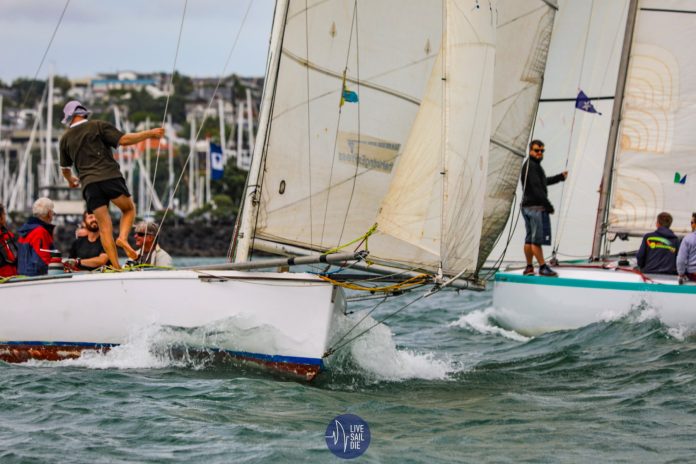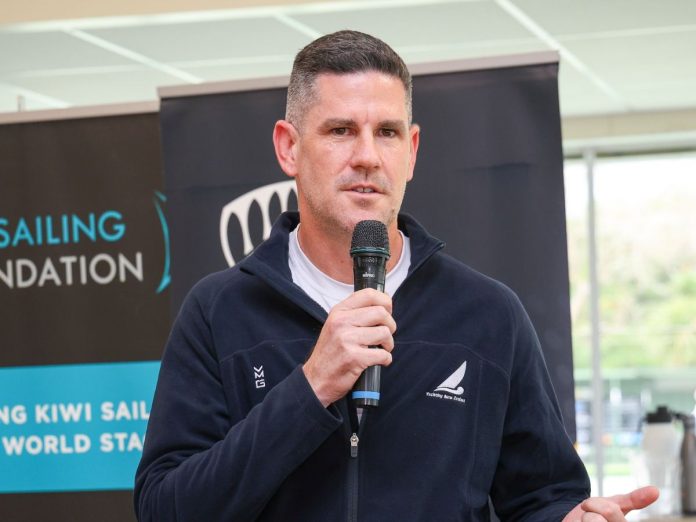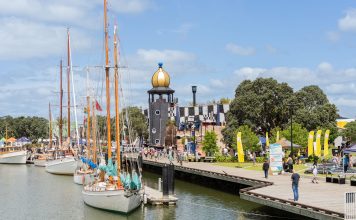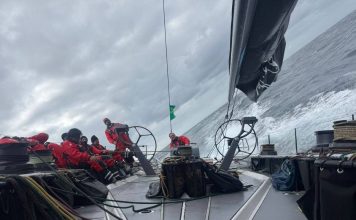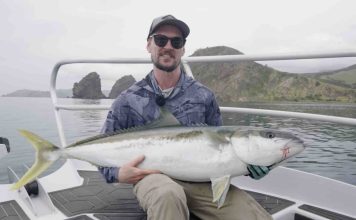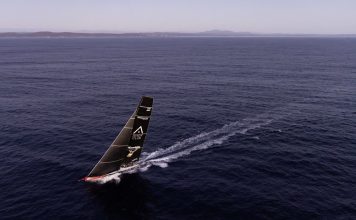Recognising the milestone
This October, Ponsonby Cruising Club celebrates its 125th anniversary, a remarkable milestone for one of New Zealand’s most influential sailing institutions. The celebrations include a 125th Anniversary and Series Opener Party on October 4, where members, friends and family will gather at the clubhouse in Westhaven. The event doubles as the opening of the Two-Handed Summer Harbour Series and will feature live music from The Soul Agents, and a chance to reflect on a century and a quarter of rich maritime tradition.
The moment is a chance to acknowledge the club’s place in shaping Auckland yachting — from the mullet boat fleets that once fished and raced out of St Mary’s Bay, to the stewardship of the Lipton Cup, to the generations of sailors who learned the ropes at Ponsonby.
Setting the scene
The Ponsonby Cruising Club was founded in October 1900, at a time when New Zealand’s yachting culture was already well established. Nelson Yacht Club had opened its doors in 1857, the Royal New Zealand Yacht Squadron (under the name the Auckland Yacht Club) in 1871 (who at the time met closer to the centre of Auckland’s waterfront), and Devonport, Heretaunga and Takapuna followed in the early 1900s. Across the Tasman, the Tamar Yacht Club in Launceston (Tasmania, in 1837), the Royal Yacht Club of Victoria (1853) and Sydney Yacht Club (1862) were among the pioneers.
These early clubs were more than racing organisations. They were social hubs, inspired by the “cruising clubs” of the British Empire where colonists recreated the familiar rituals of home. Dining, drinking, and the camaraderie of the sea gave these institutions a sense of permanence and belonging in new lands. Ponsonby was no different, quickly establishing itself as both a meeting place and a competitive force in Auckland’s sailing scene.
Foundations at St Mary’s Bay
Learn more from the Ponsonby Cruising Club.
The first Commodore was William Bettany. The flag chosen — a blue pennant with a white chevron — still flies today. By 1905, the club had its own clubhouse, slipway and jetty at St Mary’s Bay. (For those outside of Auckland, St Mary’s Bay extends from the Wynyard Quarter to the Auckland Harbour Bridge.)
This location was no accident. At the time, St Mary’s Bay was ringed by the yards of Auckland’s best-known boatbuilders: Collings & Bell, Leon Warne, Dick Lang, Chas. Bailey and others. The Ponsonby clubrooms stood right in the heart of the city’s maritime industry, where new designs were launched, tested, and raced just metres from the clubhouse steps.
The bay itself became a protected anchorage in 1909, but storms repeatedly tested the moorings. After a devastating blow in 1928, plans were drawn up for a breakwater, completed in 1940, creating the safe haven that became known as Westhaven.
The Lipton Cup and the mullet boats
No story of Ponsonby Cruising Club can be told without the mullet boat. Born from the fishing smacks that netted mullet close to Auckland from the late 1870s, these shallow-draft centreboarders quickly became the “working man’s yacht.” Affordable, handy in the shallows, and quick when well sailed, they embodied Auckland’s egalitarian boating spirit.
MARU AND AUCKLAND’S 24FT MULLET BOATS / Match-racing the Mulletties
By 1903, the Ponsonby Regatta Committee had codified them into four restricted classes — 20, 22, 24 and 26 footers — ensuring they remained tied to their fishing origins while developing into robust racing machines. Sunday fishing trips often turned into impromptu races home, fuelling rivalry and innovation.
The 22-footers, known as the ‘L’ Class, became the mainstay of Ponsonby Cruising Club and the chosen class for its most famous trophy. In 1904, Sir Thomas Lipton was elected Vice President of Ponsonby Cruising Club, and in 1920 he presented the Lipton Cup for interclub competition. The first race was held in 1921, and it has been sailed every year since in the same boats, under the same rules — 104 years of uninterrupted tradition.
Women in sport: Kelsey Muir helms the 104th Lipton Cup winner
In January 1940, when storms forced the cancellation of all other Auckland racing, the Lipton Cup still went ahead. Such is its place in the local psyche.
Famous boats and skippers
Through the early decades, the mullet boat fleet produced a litany of legends. Glady, Why Not and Maru were crack 24-footers, while the 22-foot class saw the emergence of Mowai, Venus, Welcome Jack and Valeria. The most successful of all was Tamariki, built by Charlie Collings and steered by W.A. “Farmer” Willetts to multiple Lipton Cup victories.
The 24-footer Maru, built in 1905, remains a tangible link to this era. She changed hands many times, raced and cruised on both Waitematā and Manukau harbours, and even rescued a capsized crew of Sea Scouts in 1950. In 2021, she has been entrusted to Jason Prew of the Classic Yacht Association for restoration.
These boats, and the sailors who drove them hard, gave Ponsonby its reputation for competitive spirit and seamanship.
Junior sailing and the P Class
While the mullet boats carried the prestige, the junior programme carried the future. From the 1930s, Ponsonby Cruising Club ran learn-to-sail classes — at one point including model yachts for youngsters.
In 1939 the club adopted the Tauranga Class dinghy, soon renamed the P Class, and by 1943 had established the first official register in Auckland. The P Class became a rite of passage for generations of New Zealand sailors, and Ponsonby was at the forefront of its growth. The United Services Trophy, set up by the club as a memorial to servicemen overseas, remains a symbol of that legacy.
Today, more than 90 years later, the Ponsonby Sailing School still operates from St Mary’s Bay, teaching both children and adults.
Hard years: bridges and battles
The mid-20th century brought challenges. As plans for the Auckland Harbour Bridge and motorway advanced, PCC’s St Mary’s Bay clubhouse was demolished in the late 1950s. For a time the club had “no fixed abode.” Prizegivings were held at the Ponsonby League Club, where women were not admitted, and the Lipton Cup was kept for safekeeping at RNZYS or Takapuna.
It was a difficult era, but the club endured. By the early 1960s it had moved into new premises at Westhaven, complete with haul-out facilities. Later, in 1983, the club expanded again, taking over the former Auckland Motor Yacht Club rooms to create the Logan Lounge.
Centenary and beyond
By 2000, the Ponsonby Cruising Club had weathered a century of storms, disputes and relocations. Its Centenary Golden Oldies Reunion, held on March 31 that year, was a chance for past and present members to reconnect and celebrate. Stories flowed, friendships were renewed, and the mullet boats once again took pride of place.
Now, in 2025, the club reaches 125 years. The mullet boat Lipton Cup still runs every year, the sailing school still produces new sailors, and the clubhouse at Westhaven remains a gathering point for Auckland’s boating community.
A living legacy
Ponsonby Cruising Club’s story is not simply about bricks, timber and boats. It is about people: the fishermen who turned their workboats into racing yachts, the skippers who made names for themselves at regattas, the youngsters who cut their teeth in P Class dinghies, and the countless members who have poured time and energy into keeping the club alive.
As Westhaven Marina continues its redevelopment into the future, the Ponsonby Cruising Club remains anchored in tradition yet open to change. Few clubs in the world can claim a trophy raced annually for more than a century in the same class of boat. Few can point to a sailing school that has run for over 90 years in the same stretch of water.
For 125 years, Ponsonby Cruising Club has been a cornerstone of Auckland’s maritime culture. And, as its members gather to celebrate, the message is clear: the mullet boats may be of an old design, the clubhouse may have moved, but the spirit of Ponsonby is as strong as ever.








